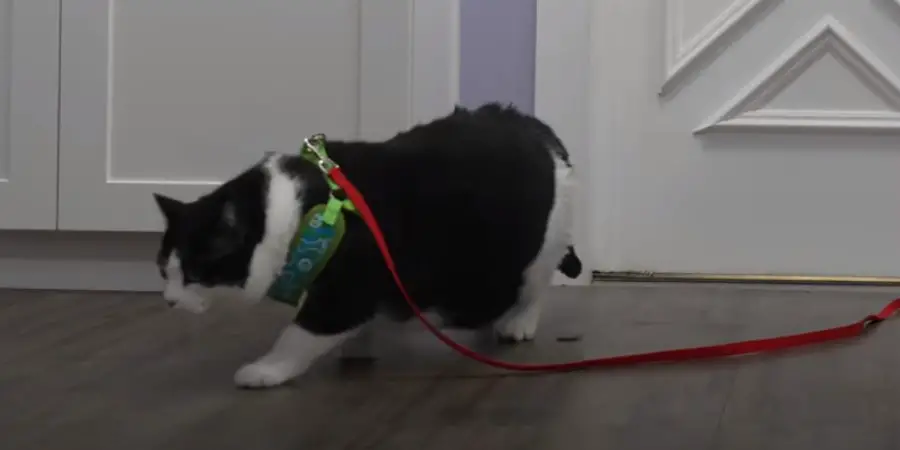Cats prefer to have a diet rich in animal fats and proteins and need to be provided with delicious and palatable food to fulfill their nutritional requirements.
Dry cat food provides essential nutrients, but homemade recipes for dry cat food can offer more nutritional variety than commercial off-the-shelf options.
Making your own dry cat food recipes requires a bit of effort, but can ultimately result in a more nutritious and satisfying meal for your furry friend.
A variety of ingredients can be used to create nutritious and tasty dry cat food recipes, including whole grains, legumes, vegetables, and meat-based proteins.
When preparing your own recipes, it is important to understand which ingredients are safe and beneficial for cats, and how to balance the nutritional content for optimal health.

1. Choose the Right Ingredients
The most important component of a dry cat food recipe is choosing the right ingredients. Cats require a diet rich in animal-based proteins and fats. Whole grains, legumes, and certain vegetables can complement the protein sources for added nutrients.
When selecting ingredients, choose varieties that are high in protein, low in carbohydrates, and free of sugar, artificial colors, and preservatives.
In addition to animal-based proteins, the recipe should also include vegetables for additional vitamins and minerals. Low-carbohydrate vegetables like kale, spinach, celery, and carrots are all safe for cats and provide a range of vitamins and minerals.
It is best to steam or blanch vegetables prior to adding them to the recipe to make them more palatable.
Finally, cats require certain amino acids that are not present in plant proteins. To ensure a full range of amino acids, supplementing the cat food with animal-based proteins is recommended. Examples of animal proteins that can be added include eggs, fish, poultry, and meat meals.
2. Balance the Nutrient Profile
The next step in making a healthy dry cat food recipe is to balance the nutrient profile. Each ingredient should be included in the right proportions to provide a full range of essential nutrients for cats.
The primary resources of nutrients should be high-quality proteins, for example, poultry, fish, and eggs.
Carbohydrates should also be added, but in small amounts. Whole grains like oats and brown rice can provide some minerals and vitamins, as can legumes and certain vegetables. However, these should only be included in small amounts, as cats tend to prefer diets low in carbohydrates.
It is important to remember that cats require certain essential fatty acids like omega-3 and omega-6 fatty acids to stay healthy.
These can be obtained from sources like fish oil and flaxseed meal. Last, but not least, cats require certain vitamins and minerals, like Vitamin A, D3, and B12, which should be supplemented.
Also Read: Why Does My Senior Cat Hate Dry Food?
3. Set up a System
Before beginning the preparation of the recipe, it is important to set up a system for measuring and tracking the nutritional content of the ingredients and the finished product.
This is important for ensuring the proper balance of nutrients is attained and can be done through the use of a scale, calculator, and food diary.
The food diary should include all the ingredients you are incorporating into the recipe, as well as the amounts. This information can then be used to calculate the nutrients present in the ingredients, as well as the overall nutrient content of the final recipe.
4. Prepare the Ingredients
Once the ingredients have been selected and the nutrient profile balanced, it is time to begin preparing the ingredients. All dry ingredients, like grains and legumes, should be rinsed to remove any dirt or debris and air-dried prior to mixing with the other ingredients.
Animal-based proteins should also be washed prior to cooking. The preferred method of cooking animal proteins is to bake or dry-fry rather than deep-fry, to reduce fat content. Finally, vegetables should be steamed or blanched prior to use.
5. Mix and Dry
Once all the ingredients have been prepared, it is time to mix them and form the kibble. Start by mixing the dry ingredients together, then gradually add wet ingredients like animal proteins and vegetables. Wet ingredients should be added slowly to avoid watery or sticky mixtures.
Once the ingredients are combined, the mixture should be dried and formed into kibble. To dry the mixture, spread it onto a baking sheet in a single layer and bake at a low temperature (between 180-200F) for several hours, stirring occasionally. Once thoroughly dry, remove from the oven and break into small pieces or kibble.
Related: Wet vs Dry Cat Food: Which Is Better?
6. Store and Serve
Once the kibble has been formed it can be stored in a cool, dry place. Proper storage will help to preserve the freshness of the kibble and ensure the food is safe to eat. It is also important to provide your cat with fresh water at all times to help digestion.
Making your own dry cat food recipes is not difficult, but it does require some effort and time. With the right ingredients, a balanced nutrient profile, and the proper system in place, you can easily start making your own dry cat food recipes that are safe, nutritious, and delicious for your cat.
His professional interests include humane education, ethics, small animal behavior, and veterinary. As a pet lover from school life, having grown up with two cats and a dog. If he isn’t spending time with his friends and family, Justin enjoys traveling. Learn more about Justin here.
Find him on: Facebook
Read his latest ARTICLES

